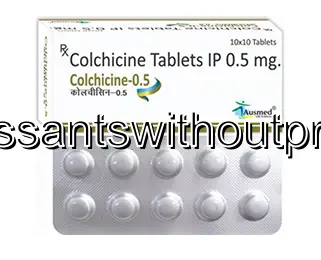Buy Autumn Crocus (Colchicum Autumnale) Online in Ireland – No Prescription Needed
| Package | Dosage | Price | Price per Dose | |
|---|---|---|---|---|
| Dosage: 0,5mg | ||||
| 270 pill | 0,5mg | €221.86 | €0.82 | |
| 360 pill | 0,5mg | €216.38 | €0.60 | |
| 180 pill | 0,5mg | €187.62 | €1.04 | |
| 120 pill | 0,5mg | €164.34 | €1.37 | |
| 90 pill | 0,5mg | €141.05 | €1.56 | |
| 60 pill | 0,5mg | €109.55 | €1.82 | |

Autumn Crocus Description
Overview of Autumn Crocus
The Autumn Crocus, scientifically known as Colchicum autumnale, is a perennial flowering plant that blooms in the fall. It is highly regarded for its medicinal properties, especially in the treatment of gout. Traditionally, the plant has been used for centuries in various cultures to alleviate joint pain and inflammation. Despite its beautiful appearance, Autumn Crocus contains potent alkaloids that require careful handling and precise dosing. When used correctly, it can offer significant relief for those suffering from certain inflammatory conditions. However, improper use can lead to serious toxicity, so it should only be used under medical supervision or according to professional guidelines.
Active Components and Their Effects
The primary active compound in Autumn Crocus is colchicine. This powerful alkaloid works by disrupting the processes that lead to inflammation, making it effective in managing gout attacks and other inflammatory disorders. Colchicine inhibits the migration of white blood cells to inflamed areas, thereby reducing swelling, pain, and redness. It also plays a role in preventing the formation of uric acid crystals in joints, which are often the cause of gout. Due to its potent action, colchicine isused in controlled doses to optimize benefits and minimize the risk of side effects. Its therapeutic use requires a delicate balance, as overdosing can result in serious toxicity, including gastrointestinal distress, bone marrow suppression, or even more severe effects.
Usage and Dosage
When obtained from an online pharmacy, Autumn Crocus is usually available in the form of colchicine tablets or capsules. The medication must be taken strictly as prescribed by a healthcare professional. Usually, initial doses are low, and adjustments are made based on the response and tolerability. It is essential to follow dosing instructions carefully to avoid adverse reactions. Treatment duration and intervals are also determined by the severity of the condition and the patient's overall health. Patients are often advised not to exceed the recommended dose, as colchicine toxicity can be life-threatening. Regular monitoring and consultations with a healthcare provider are important components of safe therapy involving Autumn Crocus.
Possible Side Effects and Precautions
Common side effects of Autumn Crocus include gastrointestinal symptoms such as nausea, vomiting, diarrhea, and abdominal pain. These are usually dose-dependent and often diminish as the body adjusts. More serious reactions can include muscle weakness, numbness, or signs of bone marrow suppression, such as unusual bleeding or infections. Due to these risks, individuals with liver or kidney impairment, certain blood disorders, or gastrointestinal issues should inform their healthcare provider before starting treatment. It is also important to avoid alcohol, which can increase the likelihood of side effects. Pregnancy and breastfeeding are generally contraindications, and safety during these periods has not been well established. Overall, meticulous adherence to medical advice is essential to ensure safe and effective use of Autumn Crocus medication.
Potential Benefits
For suitable patients, Autumn Crocus offers notable benefits. Its key advantage is the effective relief of acute gout flares, significantly reducing pain and swelling. It can also prevent future attacks when used as part of a long-term management plan. Some patients report improved joint mobility and decreased reliance on non-steroidal anti-inflammatory drugs (NSAIDs), which may have more side effects. Additionally, for patients with chronic gout, colchicine can help in controlling the frequency of flare-ups. When used responsibly, the medication can improve quality of life and reduce the discomfort associated with inflammatory joint conditions.
Conclusion
Autumn Crocus, containing colchicine, remains a potent and valuable medicinal substance in the management of gout and other inflammatory disorders. While its benefits are well recognized, its use requires careful consideration due to the risk of toxicity. It is crucial to obtain this medication through a reputable source, follow dosage instructions precisely, and stay in close contact with a healthcare provider. Proper management ensures that patients can enjoy the therapeutic advantages while minimizing potential dangers. The plant's rich history in traditional medicine continues to be supported by modern pharmacological applications, emphasizing its importance in targeted inflammatory treatment.